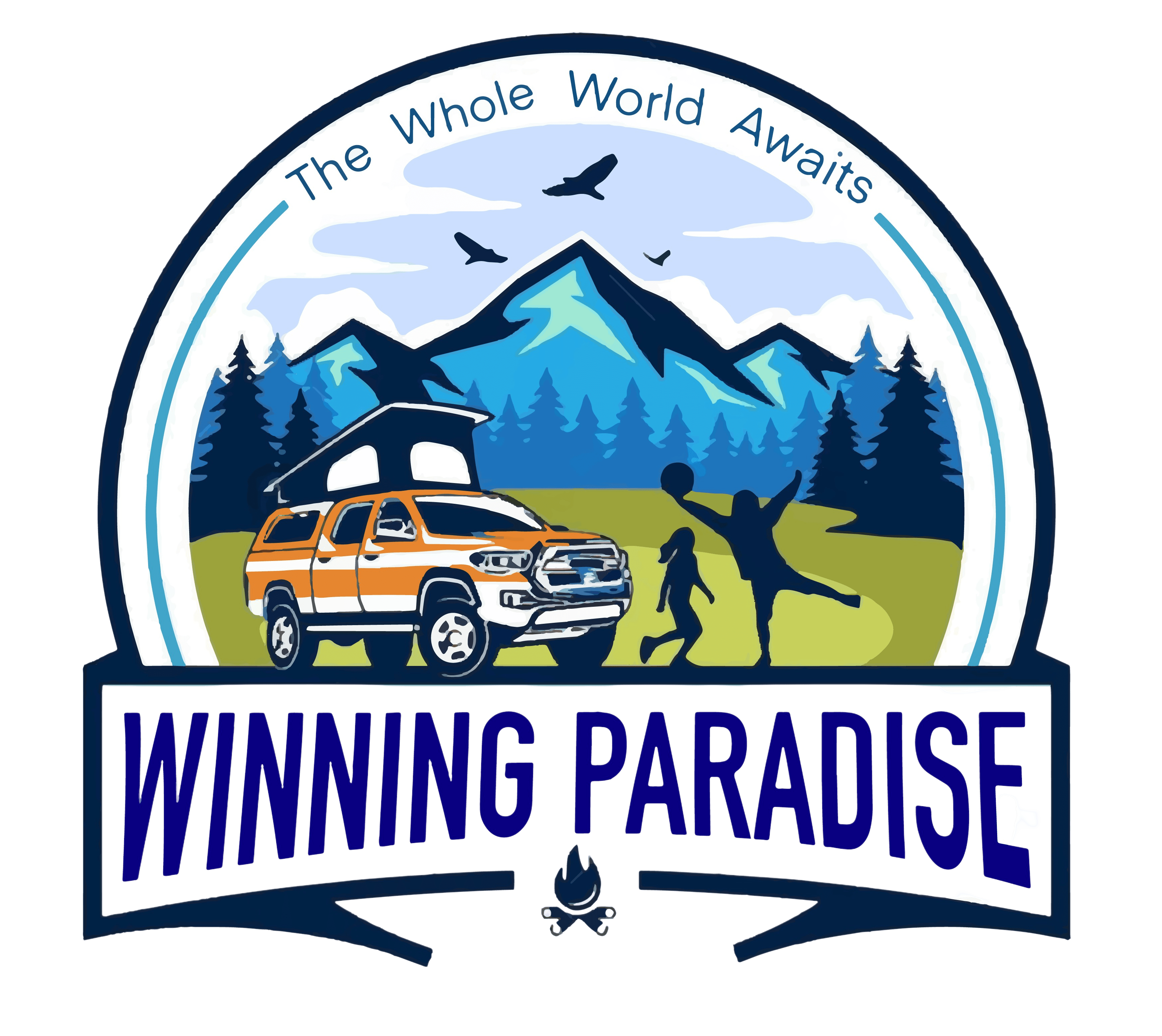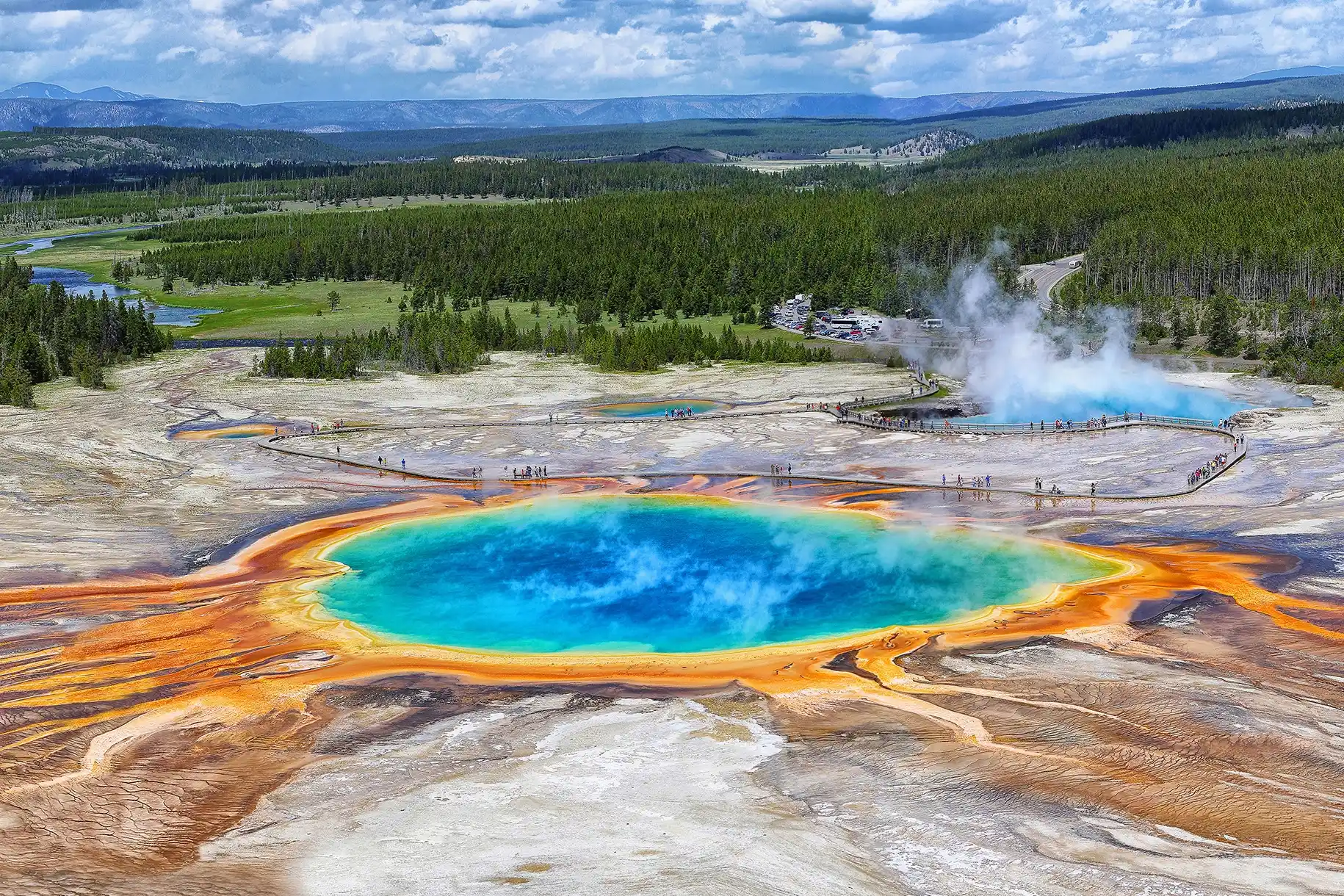Yellowstone National Park is a natural wonder, well-known for its geothermal features, stunning views, and various wildlife. While most people are attracted to Yellowstone during the summer, there’s something magical about visiting this iconic park in March. The winter still remains, offering a unique and peaceful experience.
Why Visit Yellowstone in March
March is an ideal time to explore Yellowstone if you enjoy privacy and peace. With fewer crowds, you can truly immerse yourself in the park’s beauty. The snow-covered views provide a scenic background that is perfect for photography and sightseeing. Plus, you can engage in winter-specific activities that are unavailable during other times of the year.
Weather and Conditions in March
In March, Yellowstone experiences a mix of winter and early spring weather. The temperature may fluctuate between single digits and mid-numbers in Fahrenheit (scale of measuring temperature). Snow is still dominant, especially in higher peaks. It’s essential to dress in layers, wear waterproof clothing, and be prepared for changing conditions. Having the right gear can make your visit more comfortable and enjoyable.
Best Time to Visit Yellowstone
While each season has its own charm, March offers a distinct experience. Compared to the busy summer months, March allows you to explore at a more relaxed pace. The winter scenery is breathtaking, and the opportunities for activities like snowshoeing and cross-country skiing are outstanding.
Getting to Yellowstone National Park
Traveling to Yellowstone in March requires some planning. The park’s entrances may have limited access due to snow, so checking current road conditions is crucial. Most visitors fly into Bozeman, Montana, or Jackson, Wyoming, and rent a car for the drive to the park. Ensure your vehicle is equipped for winter driving, and consider using chains if necessary.
Best Places to Stay in Yellowstone
When visiting Yellowstone in March, finding suitable accommodations is key. Within the park, options like the Mammoth Hot Springs Hotel and Cabins offer a relaxing place to stay. For those preferring to stay outside the park, West Yellowstone provides a range of hotels and lodges. This town is conveniently located and offers easy access to park entrances and amenities.
Things to Do in West Yellowstone
West Yellowstone is a gateway to numerous adventures. From snowcoach tours to the Grizzly and Wolf Discovery Center, there’s no shortage of activities. You can also enjoy ice fishing on Hebgen Lake or take a scenic snowmobile ride through the surrounding wilderness.
Exploring the Geysers and Hot Springs
No visit to Yellowstone is complete without seeing its famous geysers and hot springs. In March, you can see Old Faithful without the summer crowds. Be sure to visit the Norris Geyser Basin and the Grand Prismatic Spring. Always stay on designated paths and trails to ensure your safety around these geothermal features.
Winter Wildlife at Yellowstone
March is a fantastic time for wildlife viewing. Bison, elk, and wolves are more visible against the snowy background. Lamar Valley is one of the best places to spot wildlife, offering opportunities to see animals in their natural habitat. Remember to keep a safe distance and use binoculars for a closer look.
Snowshoeing and Cross-Country Skiing
Yellowstone’s trails are perfect for snowshoeing and cross-country skiing. Popular trails include the Tower Fall and Mammoth Hot Springs areas. These activities allow you to explore the park’s winter wonderland closely. If you’re new to these sports, consider renting equipment and taking a guided tour.
Thrilling Snowmobile Tours
Guided snowmobile tours are a thrilling way to see Yellowstone’s winter views. Tours typically start from West Yellowstone and cover key attractions like the Grand Canyon of the Yellowstone and Old Faithful. Ensure you’re dressed warmly and follow all safety instructions from your guide.
Photography Experience in Yellowstone
Yellowstone in March is a photographer’s dream. The contrast of snow and geothermal steam creates stunning visuals. For the best shots, visit during the early morning or late afternoon when the light is soft. Don’t miss capturing the iconic views of Yellowstone Falls and the Mammoth Hot Springs terraces.
Winter Hiking Adventures
Winter hiking in Yellowstone can be a rewarding experience. Trails like the Blacktail Plateau and Tower Fall offer scenic views and a chance to experience the park’s calmness. Wear appropriate footwear and bring trekking poles for stability on snowy paths.
Where to Eat Nearby
After a day of exploration, refuel at one of Yellowstone’s dining spots. The Mammoth Hot Springs Dining Room offers delicious meals with a view. In West Yellowstone, you can find local favorites like the Slippery Otter Pub and Grill, serving up delicious comfort food.
Packing Essentials for a March Visit
Packing for Yellowstone in March requires a bit of preparation to ensure you stay warm and comfortable. Here are some essentials to include in your packing list:
- Layered Clothing: Pack thermal underwear, fleece jackets, and waterproof outer layers. Layering helps you adjust to changing temperatures throughout the day.
- Footwear: Waterproof boots with good insulation are a must. Traction devices like Yaktrax can provide additional grip on icy surfaces.
- Accessories: Don’t forget warm gloves, hats, and scarves. Sunglasses are also important to protect your eyes from snow.
- Daypack: A strong daypack will come in handy for carrying snacks, water, and extra layers during your outings.
- Camera Gear: With the stunning winter scenery, you’ll want to capture every moment. Bring a good camera, extra batteries, and memory cards.
Safety Tips for Visiting Yellowstone in March
Safety should always be a priority when visiting Yellowstone, especially in winter conditions. Here are some tips to keep in mind:
- Check Road Conditions: Before heading out, check the latest road conditions and park alerts. Weather can change rapidly, and some roads may be closed.
- Stay on Designated Trails: To protect both yourself and the park’s natural features, always stay on marked trails and paths, especially around geothermal areas.
- Be Prepared for Emergencies: Carry a basic first-aid kit, a map, and a compass. Mobile service can be inconsistent, so don’t rely solely on your phone’s GPS.
- Wildlife Safety: Keep a safe distance from wildlife. Use binoculars or a zoom lens for a closer look without disturbing the animals.
- Stay Warm: Hypothermia is a risk in cold weather. Stay dry and change out of wet clothes immediately. Take breaks indoors to warm up if needed.
Last Words
Visiting Yellowstone National Park in March is a unique and rewarding experience. The combination of fewer crowds, winter activities, and stunning scenery makes it an unforgettable destination. Whether you’re snowshoeing through the forest, spotting wildlife, or simply enjoying the peaceful atmosphere, Yellowstone in March offers something special for every traveler.

